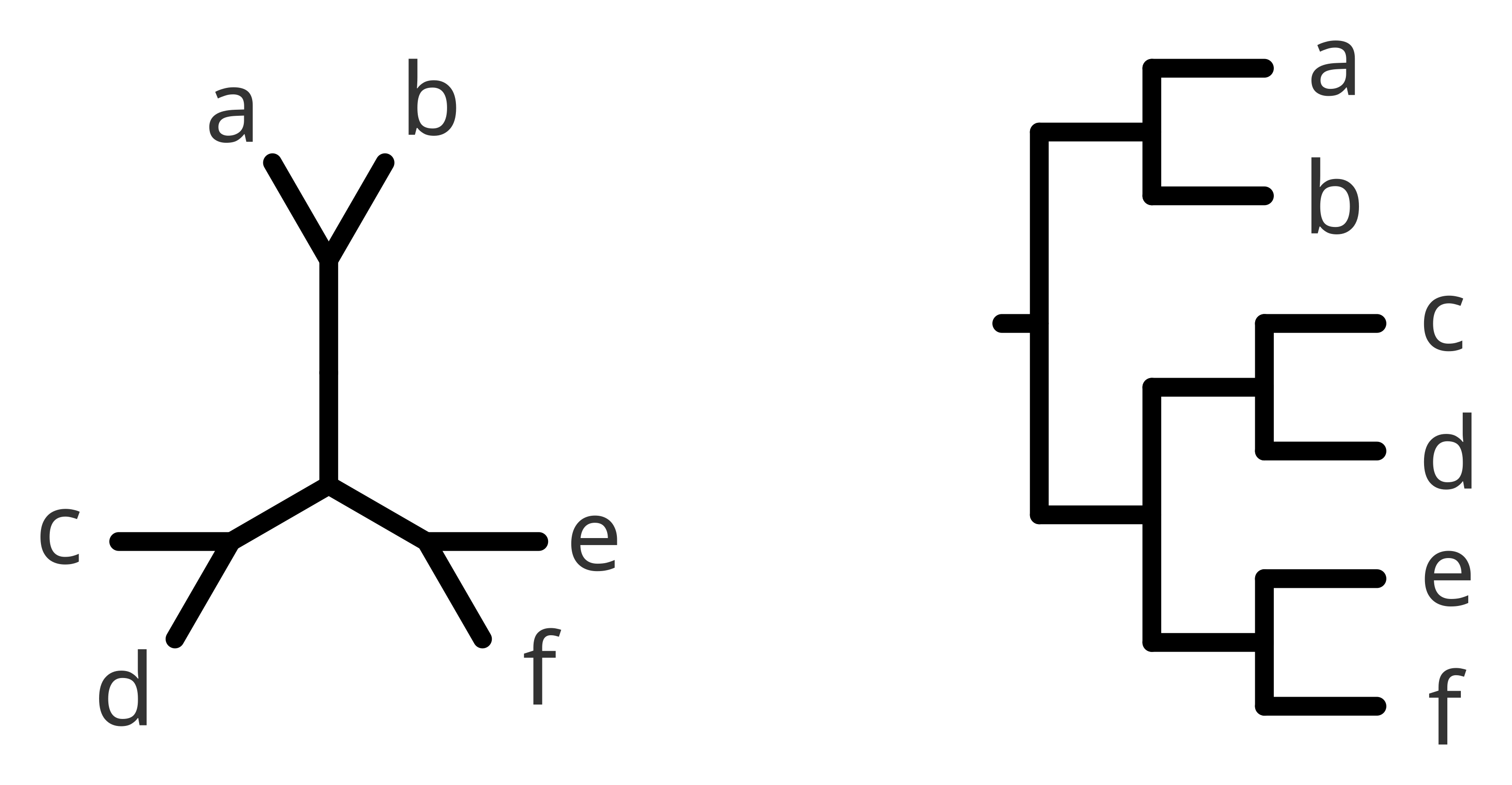How to write trees#
In terms of formating, the simplest tree format is called newick, and it is simply a nested grouping of trees, where tips are separated by commas, and nodes are grouped by parentheses.

The previous example would look like as follows:
((a,b),((c,d),(e,f)));
Note the semicolon (“;”) terminating the tree.
Branch lengths (or the accumulated change) are provided after the given tip or node separated by a colon (“:”), as follows:
((a:1,b:1),((c:1,d:1),(e:1,f:1)));
And finally, it is possible to add names to the nodes by simply including such names after the given node, as follows:
((a:1,b:1),((c:1,d:1),(e:1,f:1)sub-clade)clade);
